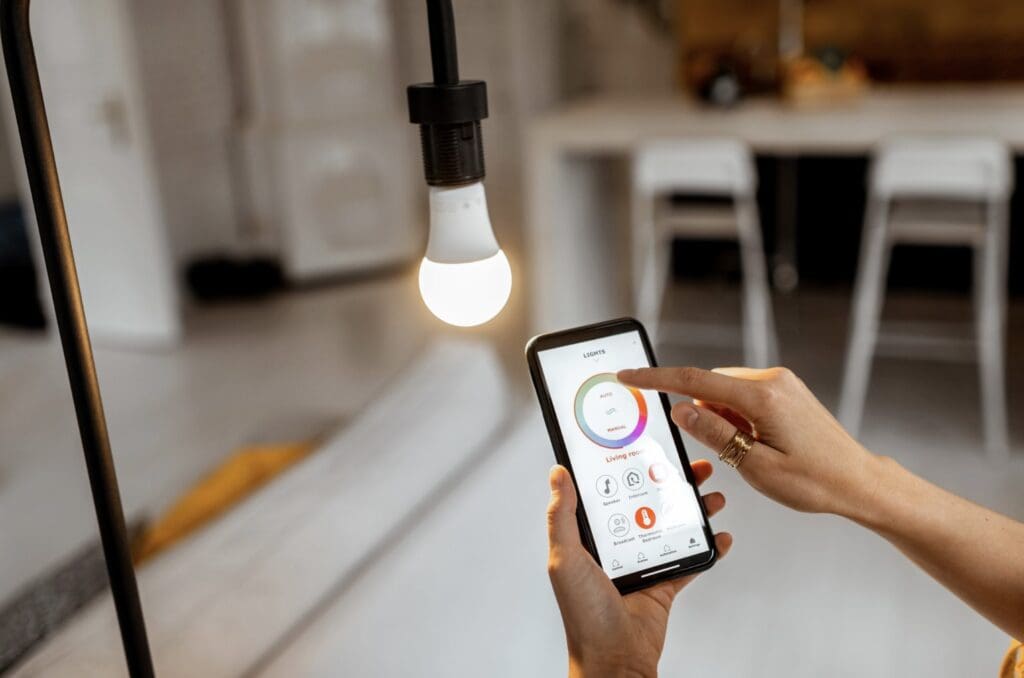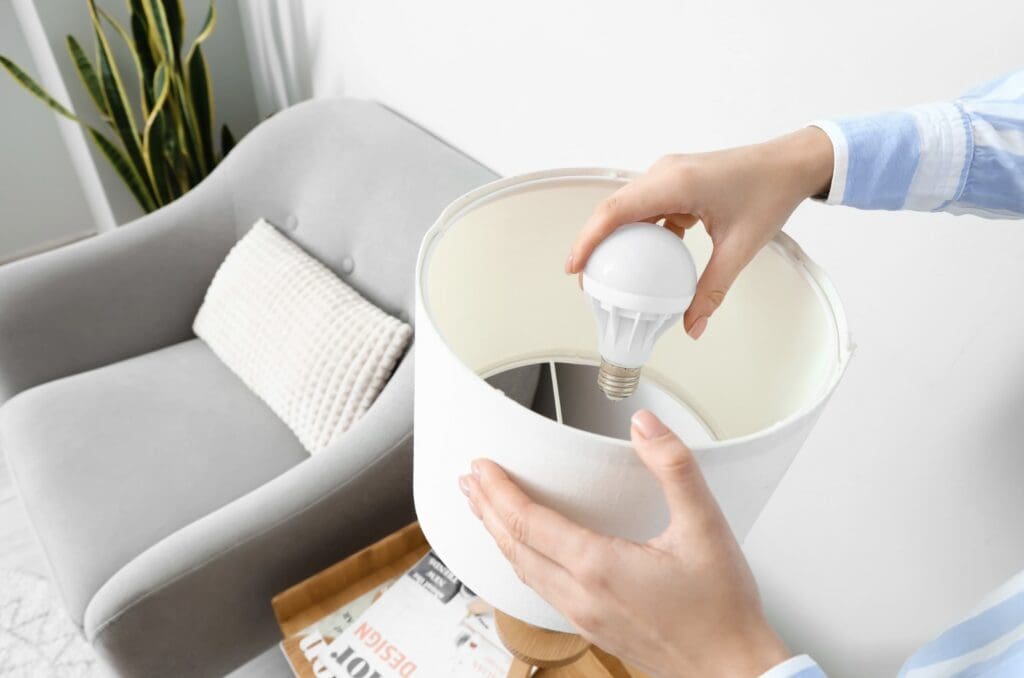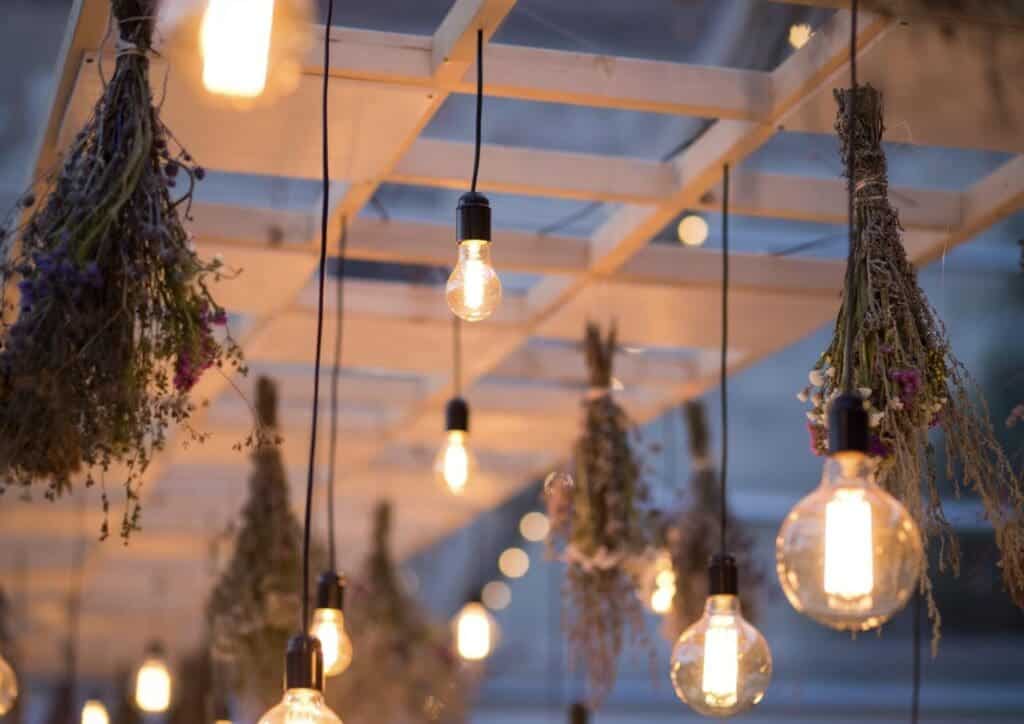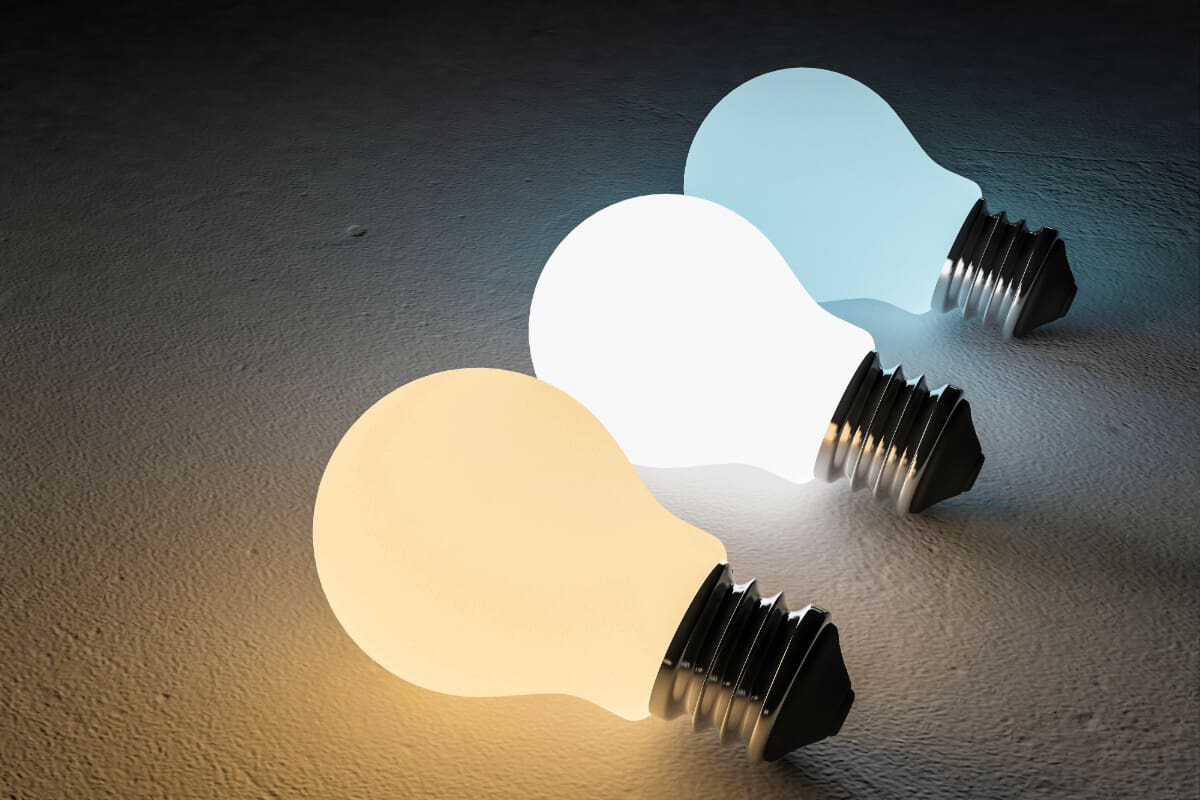Light permeates every aspect of our lives, casting tangible hues that shape our environments and subtle shades that influence our moods. The spectrum of light bulb colors is an intricate dance of science and art—a dynamic range of possibilities that extends far beyond the traditional incandescent glow. Understanding the complex interaction of light color, temperature, and its effect on our daily lives requires a journey through the Kelvin scale and the myriad of materials that paint our world with light.
As such, the myriad hues emitted by various bulbs are not just a feature of our décor but a fundamental facet of our psychological and physiological experience. This exploration begins with the physics behind the colors we see and extends into the profound ways these colors touch upon the human experience, from the serene ambiance they create to their impact on our circadian rhythms.
Table of Contents
- Spectrum of Light Bulb Colors
- Psychological Impacts of Light Colors
- Applications of Colored Light Bulbs
- Innovations in Light Bulb Color Technology
- Related Content
Spectrum of Light Bulb Colors
The Significance of Light Bulb Colors in the Visible Spectrum
Understanding the visible spectrum is essential in the nuanced application of artificial lighting. Light bulbs are not merely sources of illumination but instruments that can dramatically alter the environment according to their color characteristics. The light emitted from bulbs spans red to violet, mimicking a subset of the sun’s natural spectrum. Each segment of this spectrum possesses distinct properties with a multitude of implications.
Longer wavelengths and lower energy than other colors characterize red light at one end of the spectrum. It is adept at preserving night vision. It is often used in spaces where the eyes must swiftly adjust between light and darkness, such as in astronomical observatories or photographic darkrooms. Moreover, red light affects circadian rhythms, influences sleep cycles, and potentially enhances melatonin production when utilized appropriately in nocturnal environments.
Transitioning to the middle of the spectrum, green is perceived as the brightest to the human eye and is most sensitive to our vision. This quality renders green light exceptionally useful for the intricate work that demands acute visual discernment. In medical contexts, green lighting is leveraged within operating rooms to enhance surgeons’ concentration and alleviate eye fatigue.
Further, blue light corresponds to shorter wavelengths and is more energetic along the spectrum. This higher energy level is double-edged; while blue light is praised for its ability to boost attention during daylight hours, its pervasive use in electronic screens has raised concerns about potential disruptions to sleep patterns. In lighting design, blue light is cautiously employed to invigorate spaces but is moderated to avoid adverse physiological effects.
At the spectrum’s opposite end, violet and near-ultraviolet light are less common in everyday lighting due to their proximity to the ultraviolet zone, which can be harmful. However, violet light does find niche applications in forensic and artistic spheres where fluorescence effects are desired.
Finally, the familiar, bright white light, produced by combining various colors in the spectrum, is cherished for its versatility and similarity to natural daylight, enhancing mood and productivity. The ability to modulate color temperatures from warm to cool white allows for the customization of ambiance, supporting tasks ranging from the calmer settings of residential lighting to the concentration-demanding environment of offices.
The judicious selection of light bulb color, grounded in the science of the visible spectrum, is applied with precision to optimize human comfort and function. A deeper understanding of these effects promotes better design and advances human health and productivity in an artificially lit world.

Psychological Impacts of Light Colors
In artificial lighting, the influence of various light bulb colors on human psychology and behavior is an intriguing subject that has garnered substantial research. After examining the properties and implications of individual colors such as red and green, the concerns of blue light, and the applications of violet to near-ultraviolet light, it is essential to continue the discussion by exploring other significant hues within the spectrum.
Yellow light, often perceived as warm and inviting, is known for its ability to create a sense of coziness and relaxation. It is frequently utilized in environments where calmness and comfort are desired, such as living rooms and restaurants. The psychological effect of yellow light is associated with its capacity to stimulate feelings of warmth and safety. It is often selected for spaces meant for rest and leisure.
Orange light shares similarities with red and yellow, producing a welcoming atmosphere that stimulates appetite and social interaction. This is beneficial in dining environments, as it can enhance the culinary experience by subtly influencing diners to enjoy their meals and engage in conversation. Moreover, orange lighting can bolster creativity and enthusiasm, making it suitable for creative workspaces where innovative thinking is encouraged.
The impact of colored lighting extends beyond psychological effects to influence circadian rhythms. For instance, exposure to specific light colors, such as those in the cooler spectrum, during evening hours can disrupt natural sleep patterns. As such, it is imperative to consider the timing and context of light color exposure. Utilizing warmer tones like amber in the evening can aid in the preparation for sleep by signaling to the body that it is time to wind down.
Furthermore, amber-colored lighting is particularly beneficial in environments occupied by nocturnal workers and those with sleep disorders. The amber tone minimizes melatonin suppression, a hormone essential for maintaining healthy sleep-wake cycles. Implementing lighting strategies that consider the circadian system can improve patient outcomes and staff performance in healthcare settings.
In the context of retail spaces and marketing, the color of light is a subtle yet powerful tool that can influence consumer behavior. Colors such as warm whites can enhance the perceived quality of products and encourage purchasing decisions. At the same time, cooler tones can create a more energetic shopping environment that may increase customer movement and interest.
Lastly, it is essential to deliberate on the environmental and psychological importance of light intensity and the interplay with color. The brightness of a light bulb, measured in lumens, combined with its hue, can alter mood and cognitive function. This elucidates the necessity for nuanced lighting design, accommodating both the desired ambiance and functional requirements of a given space.
As the spectrum of artificial light continues to evolve with LED technology and other advancements, the ability to fine-tune lighting for specific psychological and behavioral outcomes will only improve. Manufacturers, lighting designers, and end users must continue incorporating this knowledge to foster environments that align with the desired human experiences while maintaining health and well-being.

Applications of Colored Light Bulbs
Industries and commercial enterprises increasingly leverage the variegated palette of light to enhance their spaces’ function and aesthetic. It is crucial to discern how different hues, beyond the previously discussed red, green, blue, and violet spectrums, contribute to the human experience and fulfill specific industrial needs.
Yellow and orange lights, nestled warmly between red and green on the spectrum, offer a balance of invigoration and coziness. These colors foster a sense of alertness without the intensity that cooler tones might impart. In settings such as restaurants, the implementation of these warm tones emboldens the atmosphere, prompting a tranquil and inviting ambiance desirable for dining experiences. Equally, in industrial environments where night-time operations are vital, these colors can provide adequate lighting without starkly disrupting biological rhythms.
Far-reaching into the area of safety, yellow light is pivotal. Its high visibility under foggy or low-light conditions makes it an excellent choice for streetlights and navigational beacons. The unmistakable glow of yellow in cautionary signage or emergency lighting capitalizes on its ability to capture attention swiftly, delivering urgent messages effectively.
On the cooler end of the spectrum, industries have found niche applications for singular colors like cyan and turquoise. These shades have been adopted in environments where precision and an uncompromised focus are requisite. For instance, in the intricate work of semiconductor manufacturing, where a controlled environment and meticulous processes are critical, light of specific wavelengths precludes photochemical reactions that could compromise production.
An overlooked but noteworthy application of color in lighting is in the horticultural sphere. Agricultural specialists harness varying wavelengths to optimize plant growth. For instance, orange and yellow light can stimulate fruiting and flowering, while certain shades of blue might engender biomass growth. Thus, tunable lighting systems are revolutionizing indoor and controlled environment agriculture.
In artistic and architectural domains, lighting is the confluence of technology and expression. Colorful lighting is instrumental in sculpting perceptions of space and structure, enhancing architectural features, or creating an artistically evocative environment. This strategic deployment of light colors can modulate the mood within spaces, reinforce brand identity, or even guide movement through an environment—all testaments to lighting’s influential role in experience design.
Indeed, advancements in lighting technology are advancing industry efficiency, from intricate manufacturing processes to grand artistic illuminations. However, we must consider the long-term implications of prolonged exposure to artificial lighting, ensuring that the march of innovation considers human health and ecological balance. The industries and entities that elect to use colored lighting must consider the immediate aesthetic or functional benefits and the broader impacts of these choices.
Herein concludes our exploration of the multifaceted employment of various colored light bulbs across the industrial and commercial spectrum. May this knowledge light the path to continued progress and enlightened decision-making in artificial lighting.

Innovations in Light Bulb Color Technology
In lighting technology, the journey toward optimizing the spectral qualities of artificial illumination persists as researchers and industry innovators seek to harness the full potential of color in light bulbs. Contemporary advances extend beyond simple aesthetics, delving into functional applications that enhance safety, productivity, and ecological compatibility.
A notable development pertains to the strategic use of yellow and orange hues in ambient lighting for dining establishments and industrial environments. Such colors foster a warm, inviting atmosphere conducive to leisurely dining while mitigating the starkness typical of factory settings. Hence, restaurant patrons and workers may benefit from an environment that balances comfort with functionality.
The public safety domain has also observed the intentional implementation of yellow lights. Streetlights and emergency light fixtures frequently employ yellow illumination owing to its high visibility and contrast under diverse weather conditions. The choice of such a spectrum is rooted in the goal of optimizing visual acuity and thereby enhancing the safety of communal spaces.
In high-precision industries, particularly within semiconductor manufacturing, the application of cyan and turquoise lights is on the rise. These colors, residing in a particular bandwidth of the visible spectrum, are preferred for their capacity to provide clear and contrast-rich environments necessary for meticulous tasks.
Another intriguing advancement in color light technology is its use in horticulture. Here, manipulating light spectra via colored LEDs is revolutionizing plant cultivation practices. Specific wavelengths are being tailored to favor the photosynthetic requirements of various plant species, potentiating growth cycles and increasing yield.
Artistic and architectural design also witness the transformative power of colorful lighting. Light is utilized to enhance and manipulate the perception of space and form. Colorful lighting offers creatives an additional layer of expression, shaping moods and experiences within designed environments.
With advancements in lighting also come improvements in industry efficiency. Optimally tailored lighting conditions can reduce energy consumption and increase operational performance. Such advancements are symbiotic with global efforts to reduce carbon footprints and establish sustainable practices within industry sectors.
Moreover, emerging studies admonish the long-term implications of prolonged exposure to artificial lighting. The impact of artificial light on human health necessitates rigorous scrutiny to guide the future of light technology in a direction that harmonizes productivity with well-being.
Conclusively, the intersection of color and technology in lighting requires informed decision-making. Industry professionals and consumers must balance the transformative potential of colored light bulbs with a mindfulness of health, safety, and the environment. As the dance of photons continues to illuminate human endeavors, the responsibility rests with all actors in the lighting sphere to wield the spectrum of light with care and conscientiousness.

The world of light is ever-evolving, with new technologies illuminating unattainable paths and shifting the spectrum of possibilities into realms of unprecedented efficiency and control.
Our expedition through the various colors of light bulbs has illuminated the intricate connections between technology, psychology, and practical application—a triad that continues to transform with every luminescent advancement.
As we look to the horizon, it is clear that the future of artificial lighting is not just bright but shining with a palette of colors that promises to enrich our lives, enhance our health, and elevate our environments. Embracing these advancements in light bulb color technology, we stand on the cusp of a new era powered by the spectra that define our visual journey.
Find out more about how Mondoro can help you create, develop, and manufacture excellent home decor and furniture products – don’t hesitate to contact me, Anita. Check out my email by clicking here or become a part of our community and join our newsletter by clicking here.
Mondoro gives out a FREE Lookbook to anyone interested. You can receive a copy of our latest Lookbook by clicking here.
Listen to our Podcast called Global Trade Gal. You can find it on all major podcast platforms. Try out listening to one of our podcasts by clicking here.
Subscribe to our Mondoro Company Limited YouTube Channel with great videos and information by clicking here.
Related Content
The Ultimate Guide To Cleaning Your Ceramic Lamp: 5 Steps
There are some basic steps that you can take to effectively clean a ceramic lamp without causing any damage. These five steps will help you know what kind of cleaner should be used or how often you should clean your lamp. Other helpful pointers will ensure that you’re preserving and caring for your ceramic lamp correctly and enjoy it for years to come.
You can learn more by reading The Ultimate Guide To Cleaning Your Ceramic Lamp: 5 Steps by clicking here.
How To Clean Tempered Glass And Tempered Glass Cleaning Facts
One of the best ways to clean tempered glasses is to use a mild soap and water solution and spray the solution onto the glass surface. Allow that solution to sit; then, you can wipe it off and buff the glass. We recommend you take a microfiber towel and get all the dust and debris off the glass.
You can learn more by reading How To Clean Tempered Glass And Tempered Glass Cleaning Facts by clicking here.
How To Lighten Up And Clean A Seagrass Basket? And Other Tips
One of the best ways to lighten your seagrass basket is to put it out in the sun. When put in the sun, seagrass will naturally lighten up. You can also use soap and water to clean your seagrass baskets. We recommend putting the seagrass baskets out in the sun as this will help freshen up your basket or other Seagrass products. Seagrass is a great eco-friendly material. But with most natural materials, you want to be sure that you clean or lighten it up by using the correct steps so that your seagrass basket or other products will not be damaged.
You can learn more by reading How To Lighten Up And Clean A Seagrass Basket? And Other Tips by clicking here.

